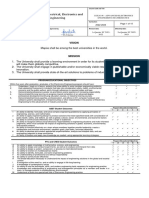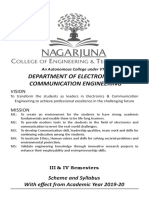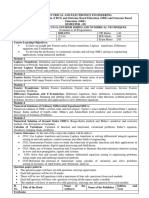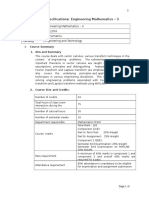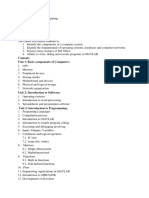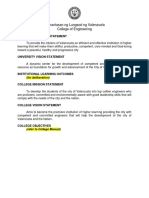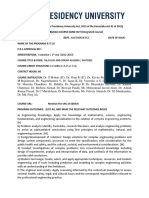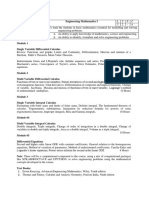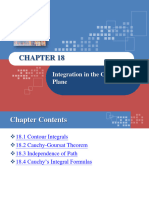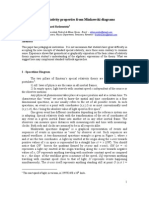0% found this document useful (0 votes)
19 views3 pagesAdvanced Engineering Math
The document outlines the syllabus for the Advanced Engineering Mathematics course (DEET-AEM 101) at Worldstar College of Science and Technology, designed for Diploma in Electronics Engineering Technology students. It covers essential mathematical concepts such as vector analysis, complex numbers, and transforms, emphasizing practical applications and critical thinking. The course includes various learning outcomes, activities, and assessments aligned with the Sydney Accord, preparing students for advanced studies in engineering fields.
Uploaded by
dummy04171985Copyright
© © All Rights Reserved
We take content rights seriously. If you suspect this is your content, claim it here.
Available Formats
Download as DOCX, PDF, TXT or read online on Scribd
0% found this document useful (0 votes)
19 views3 pagesAdvanced Engineering Math
The document outlines the syllabus for the Advanced Engineering Mathematics course (DEET-AEM 101) at Worldstar College of Science and Technology, designed for Diploma in Electronics Engineering Technology students. It covers essential mathematical concepts such as vector analysis, complex numbers, and transforms, emphasizing practical applications and critical thinking. The course includes various learning outcomes, activities, and assessments aligned with the Sydney Accord, preparing students for advanced studies in engineering fields.
Uploaded by
dummy04171985Copyright
© © All Rights Reserved
We take content rights seriously. If you suspect this is your content, claim it here.
Available Formats
Download as DOCX, PDF, TXT or read online on Scribd
/ 3

